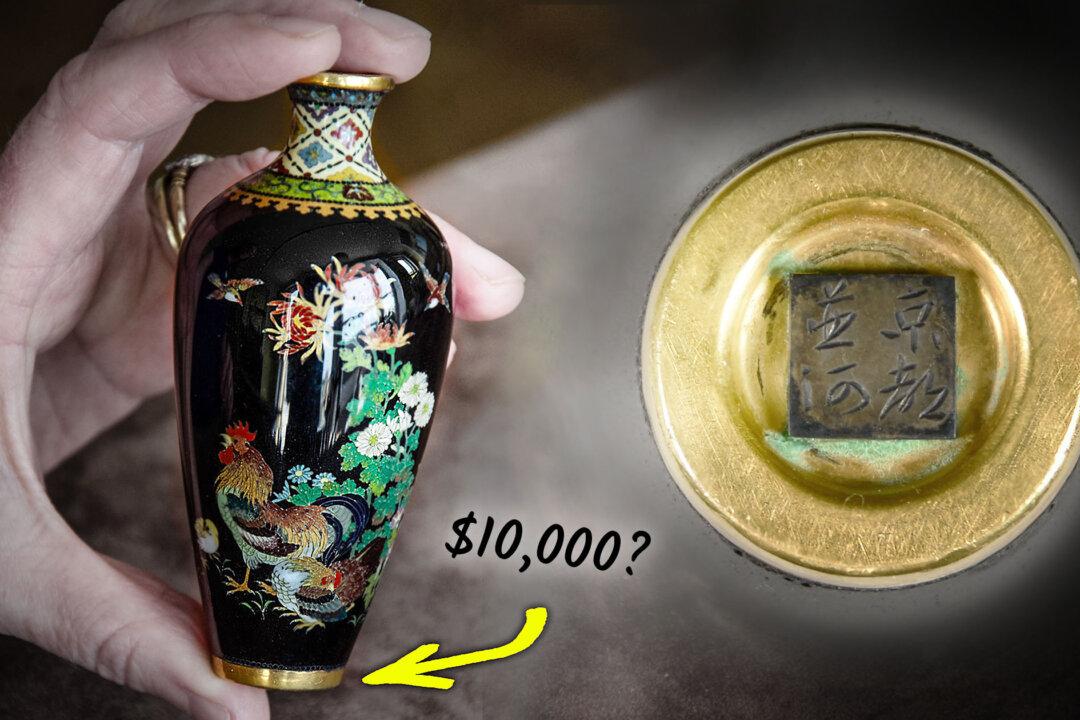The English couple, who particularly enjoy wandering through local thrift shops in Surrey, are open to unusual finds; Karen always heads straight for the used books, her significant other for the vintage antiques. Today, they stumbled on something rarer than usual.
Karen’s fella, Ahmet, had found plunder—or so he suspected—and walked over to allow her a gander: a ceramic vase, smallish, 10 centimeters (approx. 3.9 inches) tall, that fit in the palm of a hand, covered in smoothly-polished, colored enamel decorated with hens and cockerels.






